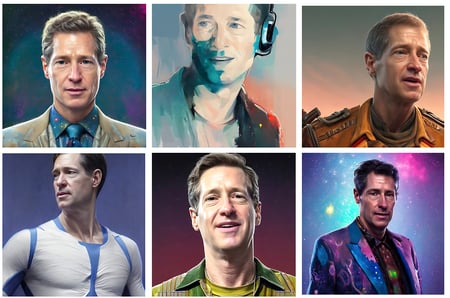 The most talked about marketing technology since the iPhone first launched in 2007 has been the experimentation with generative artificial intelligence (AI) over the past few months. Algorithms that anybody can use to quickly create images, text content, computer code, and even video and music will certainly transform marketing in the years to come.
The most talked about marketing technology since the iPhone first launched in 2007 has been the experimentation with generative artificial intelligence (AI) over the past few months. Algorithms that anybody can use to quickly create images, text content, computer code, and even video and music will certainly transform marketing in the years to come.
There are many aspects to this technology, both good and bad. This is the first post of several I am planning in February. In later posts, I’ll explore how to get started, the legal and ethical issues of using a tool that mines other peoples’ intellectual property, and the ramifications for big tech companies like Google.
Creating AI generated images
I chose the six avatars to use in this post from a hundred generated from Lensa, an AI tool for manipulating images. To do this, you download the app for your phone and then upload a selection of selfies and pay a small fee.
I think all the results are creepy! I won’t be using them as my profile image, but it is fascinating to see the power of AI and image processing.
I’ve also used an image tool called Dall-E from OpenAI to create images that could be used instead of stock photography. The tool combs through many millions of images and creates something based on a prompt that you enter. I generated the three images here using the prompt: “mid-century modern house with a swimming pool”.

While I don’t really like the artificial nature of the resulting images, I could see how a tool like this could be used to create images for blog posts or social media updates.
AI Generated text content
There has been tremendous buzz around ChatGPT, another offering from OpenAI. You enter a prompt into the system, and it quickly spits out an answer in plain text.
For example, I entered: “Describe the Grateful Dead in the style of Donald Trump” and this was the result:
"The Grateful Dead, folks, tremendous, just tremendous. I know a lot about music, let me tell you. The Grateful Dead, they're fantastic. Jam band, great energy, tremendous musicians. You know, people say to me, 'Donald, what do you think of the Grateful Dead?' I say, 'I love them, I really do.' People have a lot of respect for the Grateful Dead, let me tell you. Great tunes, tremendous following, just a tremendous band, folks."
Just like with images, the OpenAI algorithms are trained on text data it scrapes from the Web.
There are many ways this technology will benefit marketers, writing the first draft of a blog post for example. However, just like with images, the prose generated often has a fake, plastic feel to it and will need to be edited.
For more ways ChatGPT can be used, check out this excellent article by my buddy Mark Schaefer: 20 Entertaining Uses of ChatGPT You Never Knew Were Possible.
AI generated Music and video
Generative AI for music and video is coming soon. An offering called MusicLM, for example, generates high-fidelity music from text descriptions such as "a calming violin melody backed by a distorted guitar riff".
In future posts over the next several weeks, I will dig into some of the issues around AI and content creation including authenticity, choosing data sets, plus the ethical and legal ramifications of this technology.
